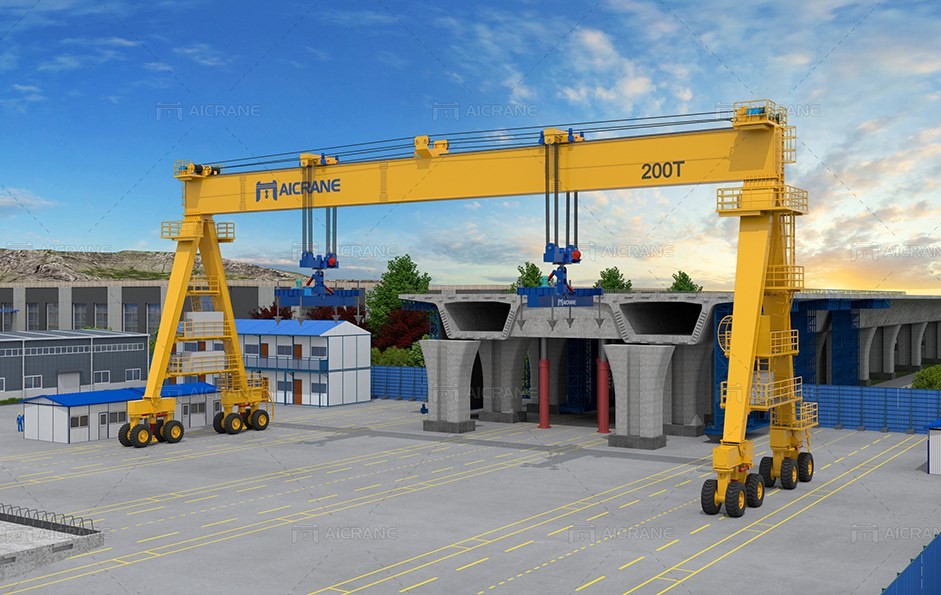
The Working of Gantry Cranes in Construction
In the dynamic realm of construction, efficiency and precision are paramount. Gantry cranes, with their towering structures and powerful mechanisms, play a pivotal role in enhancing productivity and streamlining construction processes. This article delves into the intricate workings of gantry cranes, exploring their design, functionality, and indispensable contributions to the construction industry.
Understanding Gantry Cranes
Gantry cranes, also known as portal cranes, are large, sturdy structures equipped with a horizontal beam (the bridge) supported by two legs on either side. These cranes are commonly used in construction sites, shipyards, and warehouses to lift and move heavy materials and equipment. The design of a gantry crane allows it to traverse horizontally along a rail or runway system, covering a significant area within a construction site.
Components of a Gantry Crane
Bridge:
The bridge is the horizontal beam that spans the gap between the legs of the gantry crane. It is the primary load-bearing component and houses the lifting mechanism.
Legs:
The legs of a gantry crane for construction provide support and stability. They are typically mounted on wheels or rails, enabling the crane to move horizontally along a predefined path.
Hoist:
The hoist is the lifting mechanism attached to the bridge. It comprises a hook, cable, and pulley system, allowing the crane to lift and lower heavy loads with precision.
Trolley:
The trolley is a movable mechanism that travels along the bridge, providing lateral movement for the hoist. It enhances the crane's ability to position loads accurately.
Runway System:
Gantry cranes are designed to traverse along a runway system, which can be a set of rails embedded in the ground or an overhead structure. This system determines the crane's range and coverage within a construction site.
Working Principles
The working of a gantry crane involves a harmonious interplay of its various components. Here's a step-by-step breakdown of the process:
Positioning:
Before lifting a load, the gantry crane must be accurately positioned using its runway system. The ability to traverse horizontally ensures that the crane can cover the entire construction area, reaching materials and equipment wherever needed.
Lifting:
Once in position, the hoist is activated, and the hook is lowered to the desired level. The hoist's cable is then attached to the load, securing it for lifting.
Horizontal Movement:
The crane's bridge, equipped with the hoist and trolley, can move horizontally along the runway system. This allows for precise placement of the load at various points within the construction site.
Vertical Movement:
The hoist, attached to the trolley, can lift or lower the load with precision. This vertical movement is controlled by the operator, who ensures that the load reaches the intended height for installation or transportation.
Load Manipulation:
The trolley's lateral movement along the bridge enables the operator to manipulate the position of the load horizontally. This fine-tuning is crucial, especially when placing heavy materials in confined spaces or onto specific structures.
Applications in Construction
Gantry cranes find extensive applications in construction due to their versatility and efficiency. Some key uses include:
Material Handling:
Gantry cranes excel in lifting and transporting heavy construction materials, such as steel beams, concrete blocks, and pre-fabricated components, across the construction site.
Structural Assembly:
During the construction of large structures, gantry cranes play a crucial role in assembling components. They can lift and position structural elements with precision, facilitating the construction process.
Equipment Installation:
Gantry cranes are employed for the installation of heavy machinery and equipment, ensuring safe and accurate placement within a construction project.
Bridge Construction:
In the construction of bridges, gantry cranes are utilized to handle and position massive segments, facilitating the assembly of these intricate structures.
Benefits of Gantry Cranes in Construction
Increased Productivity:
Gantry cranes enhance construction efficiency by reducing manual labor and expediting material handling processes.
Versatility:
Their ability to move horizontally and vertically, along with adjustable trolleys, makes gantry cranes versatile and suitable for various construction applications.
Precision and Control:
Operators have precise control over the movement of the crane, allowing for accurate placement of heavy loads, which is crucial in construction projects.
Safety:
Gantry cranes are designed with safety features to prevent accidents. Modern cranes often incorporate sensors and automation to enhance overall safety.
Conclusion
In the ever-evolving landscape of construction, gantry cranes stand tall as indispensable tools for lifting, moving, and placing heavy materials with precision. Their robust design and sophisticated mechanisms contribute significantly to the efficiency and safety of construction projects. As technology advances, the integration of smart features and automation further enhances the capabilities of gantry cranes, ensuring their continued prominence in the construction industry.